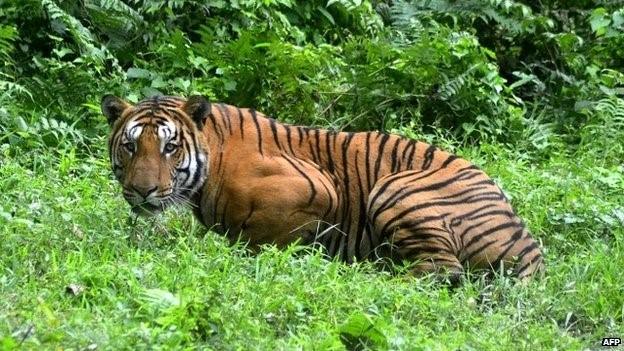Why India should not get complacent over its tiger population
- Published

India says it now has almost a third more tigers than it did four years ago
How good is the news that India has almost a third more tigers than it did four years ago?
Experts say tiger numbers are the most reliable indicators of the health of the population. But they also warn that it is more important to monitor individual tiger populations every year to really get a handle on their health. "Once-in-four-years country-wide estimates do not have much practical use. But everyone, including politicians and conservationists, seems to set much in store by these numbers," says Dr K Ulhas Karanth, one of India's top conservation experts.
According to the latest tiger census, the tiger population rose from 1,706 in 2011 to 2,226 in 2014. The latest tiger estimation identified 1,540 tigers through images collected from 9,735 camera trap locations in 18 states. "Because of the extensive survey effort and camera trap results, which identified nearly 70% of the estimated tiger number; these figures are the most accurate ever," claims WWF India, one of the country's top conservation organisations.
Sure, tiger numbers have definitely increased since 2006 when India upped investments under pressure from global and international conservationists in hiring more guards, protecting reserves and promoting voluntary village relocation. All this helped, say experts, in many parts of India, although over large swathes, tigers have been wiped out or are in low numbers.
But many questions remain. What is the state of availability of prey in India's tiger reserves? Every tiger requires a breeding prey population of 500 animals in its territory to ensure a "food bank". Tiger populations thrive on abundant prey - a breeding female tiger produces a litter of three cubs every third year. Mortality rates can be high: Dr Karanth's studies show 20% or more higher mortality rates in a thriving tiger habitat in Nagarhole in southern India.
"If we have 600 breeding tigresses in India, we will be adding 600 cubs to the population every year. So we should not be obsessing over individual tiger deaths and focus on population recovery," says Dr Karanth.
India has some 200,000 sq km (77,220 sq miles) of tiger habitat. Well-managed habitats with abundant prey can support anything between 5,000 to 10,000 tigers in the long run. "We have a long way to go, but it is doable if we get our act together. This is no time to be complacent," cautions Dr Karanth.